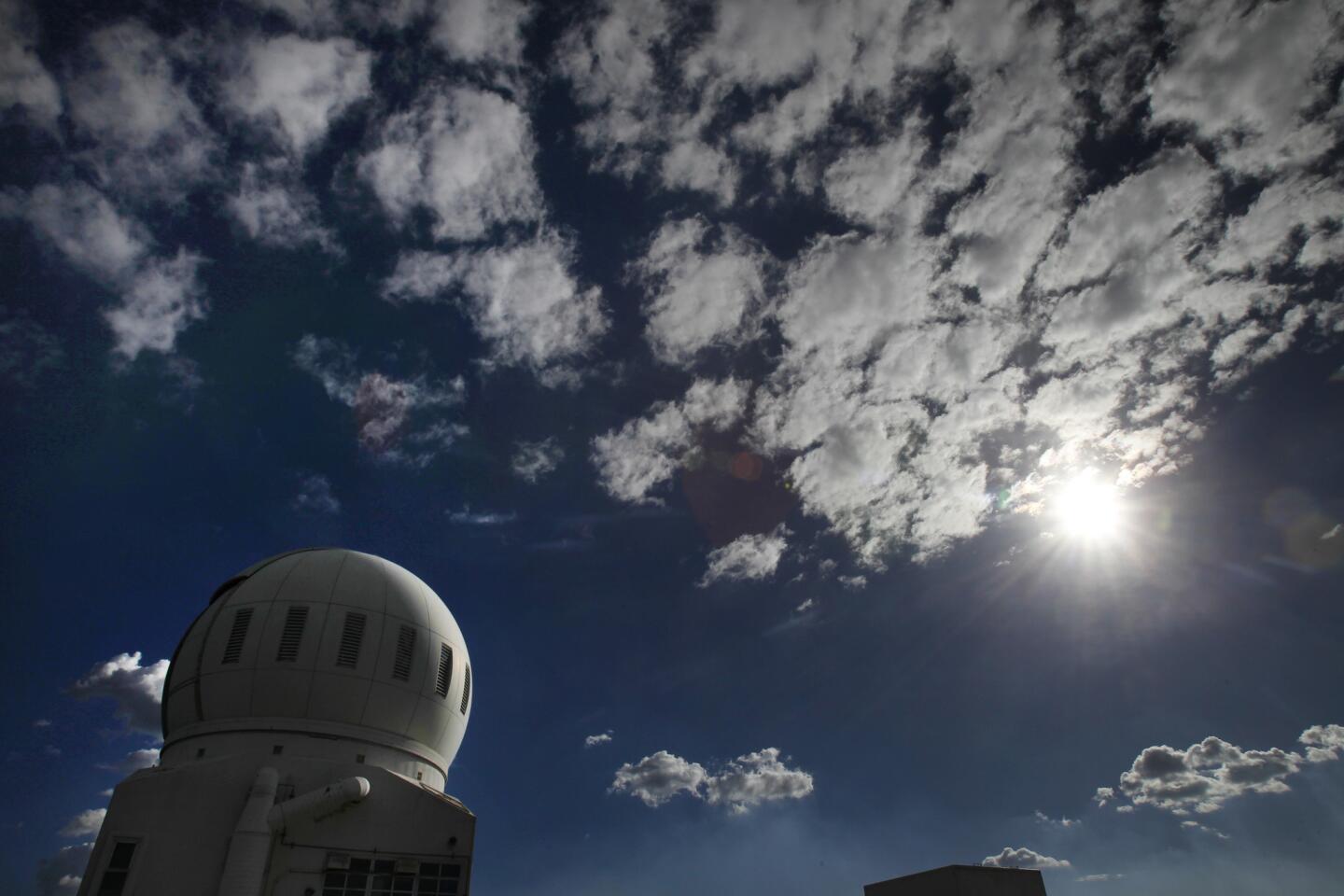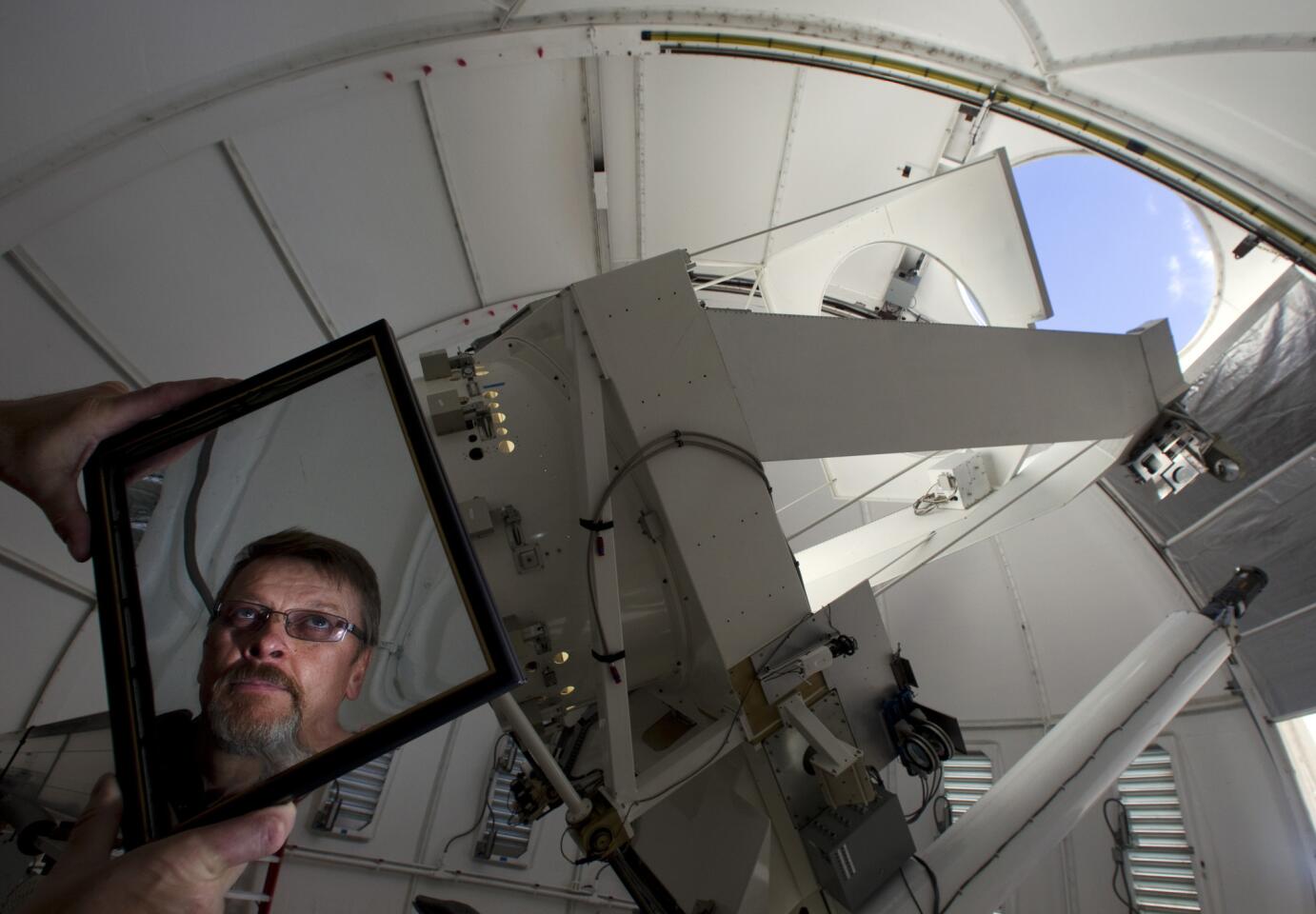
Vasyl Yurchyshyn, a research professor at the Big Bear Solar Observatory, is reflected in a high-density filter, which he uses to look at the sun through the facility’s 1.6-meter telescope. (Allen J. Schaben / Los Angeles Times)
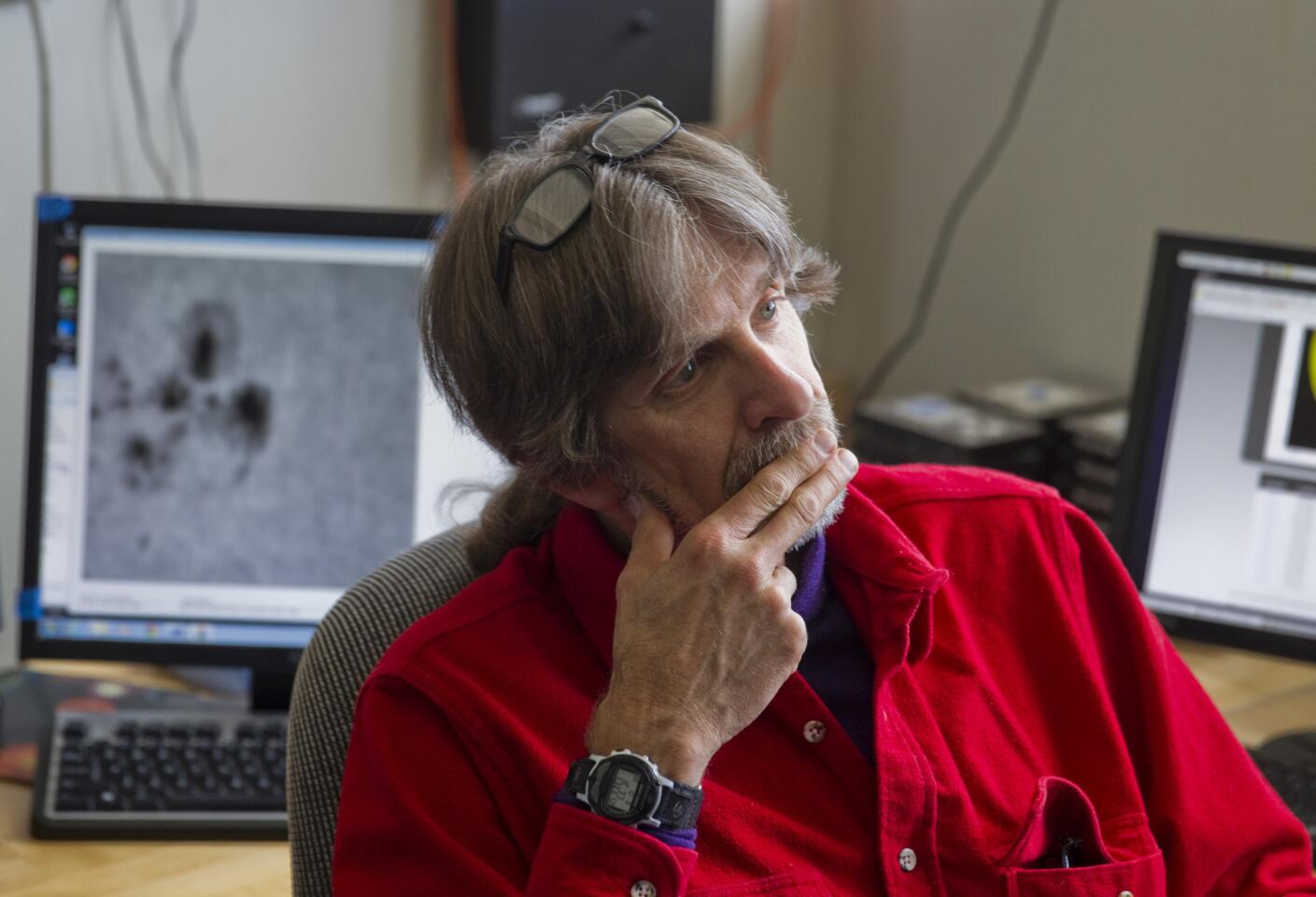
Claude Plymate, telescope engineer/chief observer at the Big Bear Solar Observatory, studies images of the sun from the facility, which sits at the end of a jetty at Big Bear Lake. It is surrounded by water, which reduces air convection that can blur images. (Allen J. Schaben / Los Angeles Times)
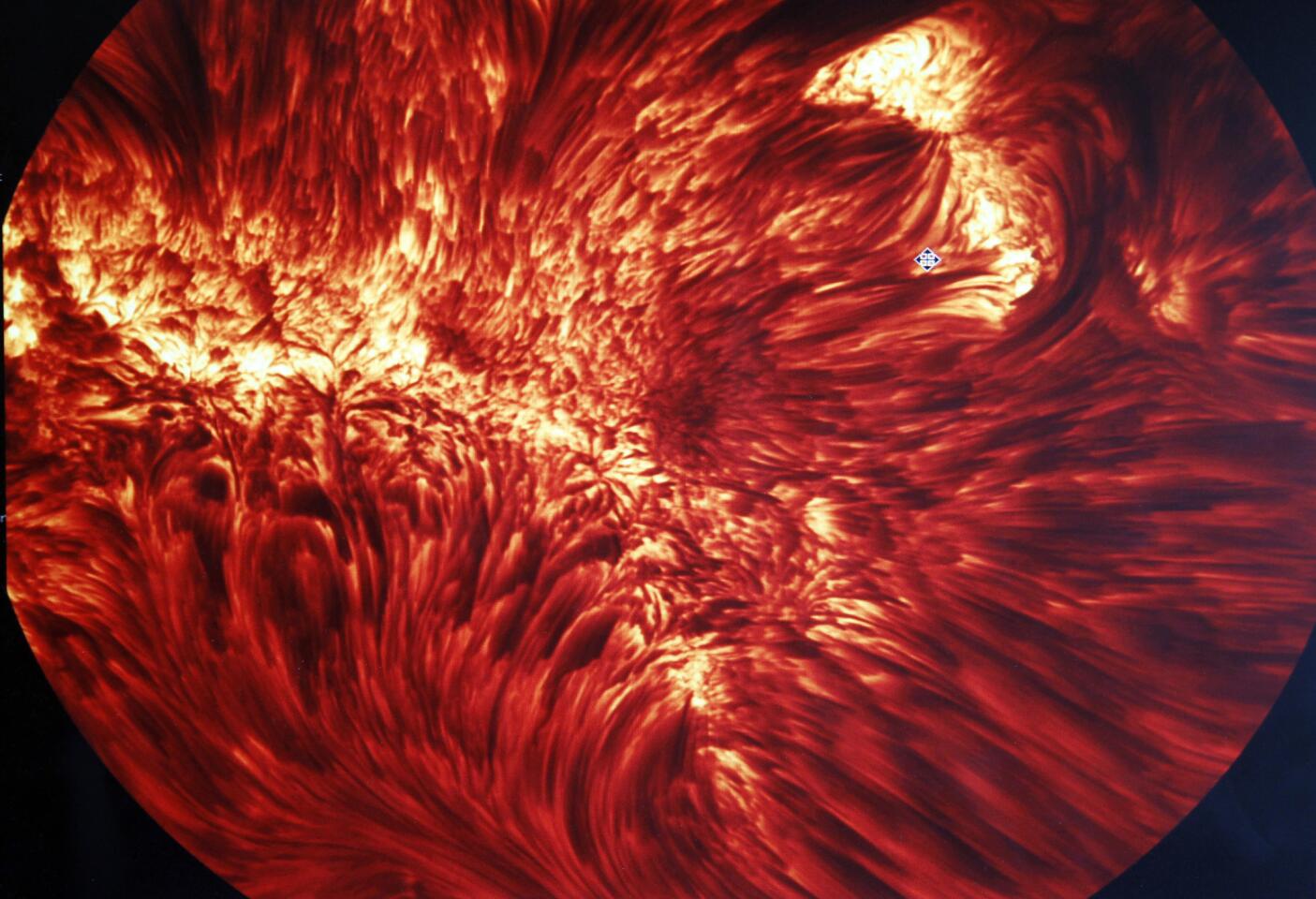
Images of sunspots are displayed on a computer screen at the Big Bear Solar Observatory on Oct. 8. The observatory offers multi-wavelength observation of sunspots and images of high-speed plasma flows and eruptions extending from the sun’s surface. (Allen J. Schaben / Los Angeles Times)
Advertisement
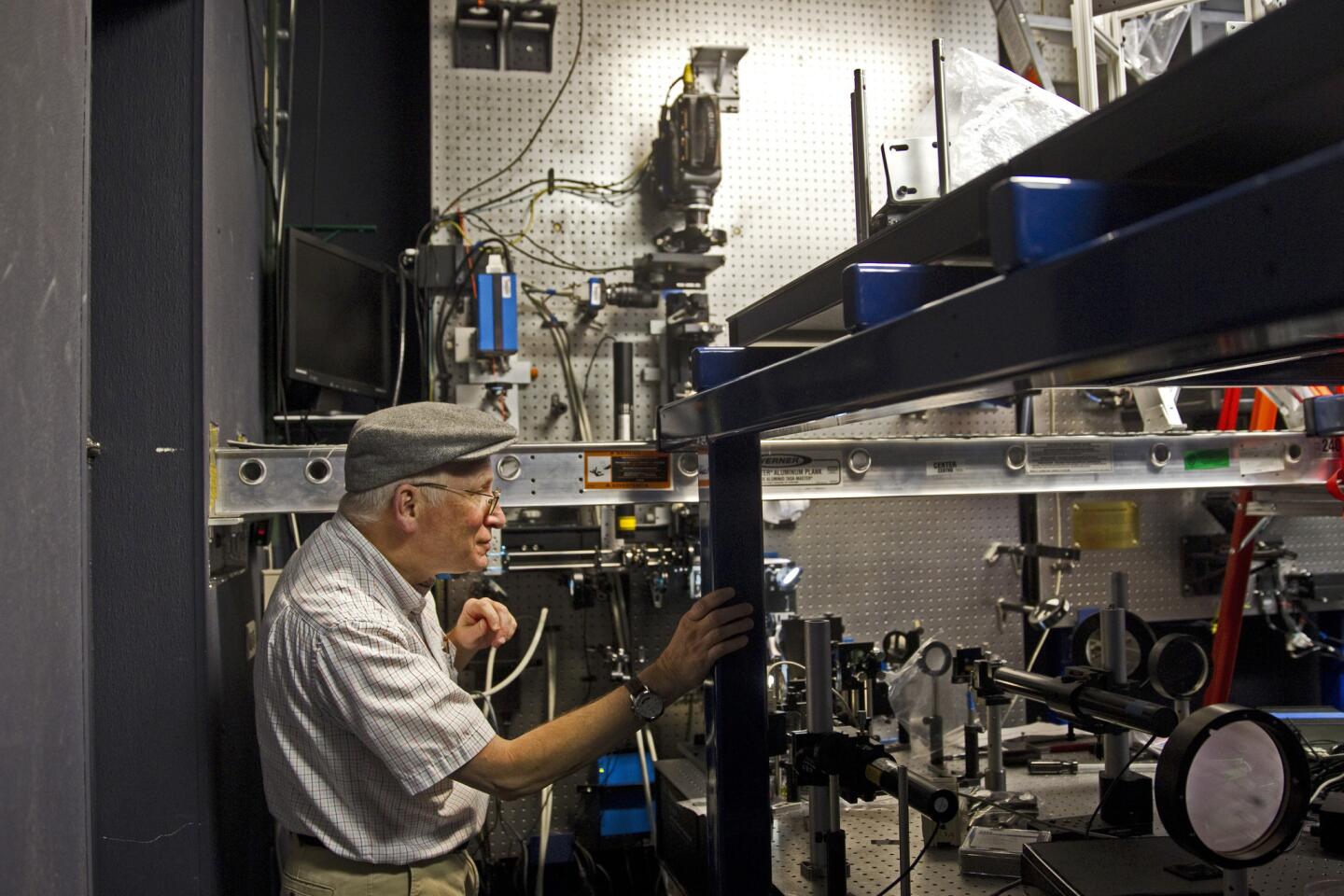
John Varsik, a research professor at the Big Bear Solar Observatory, inspects a complex alignment of cameras, mirrors and other instruments connected to the facility’s telescope. (Allen J. Schaben / Los Angeles Times)
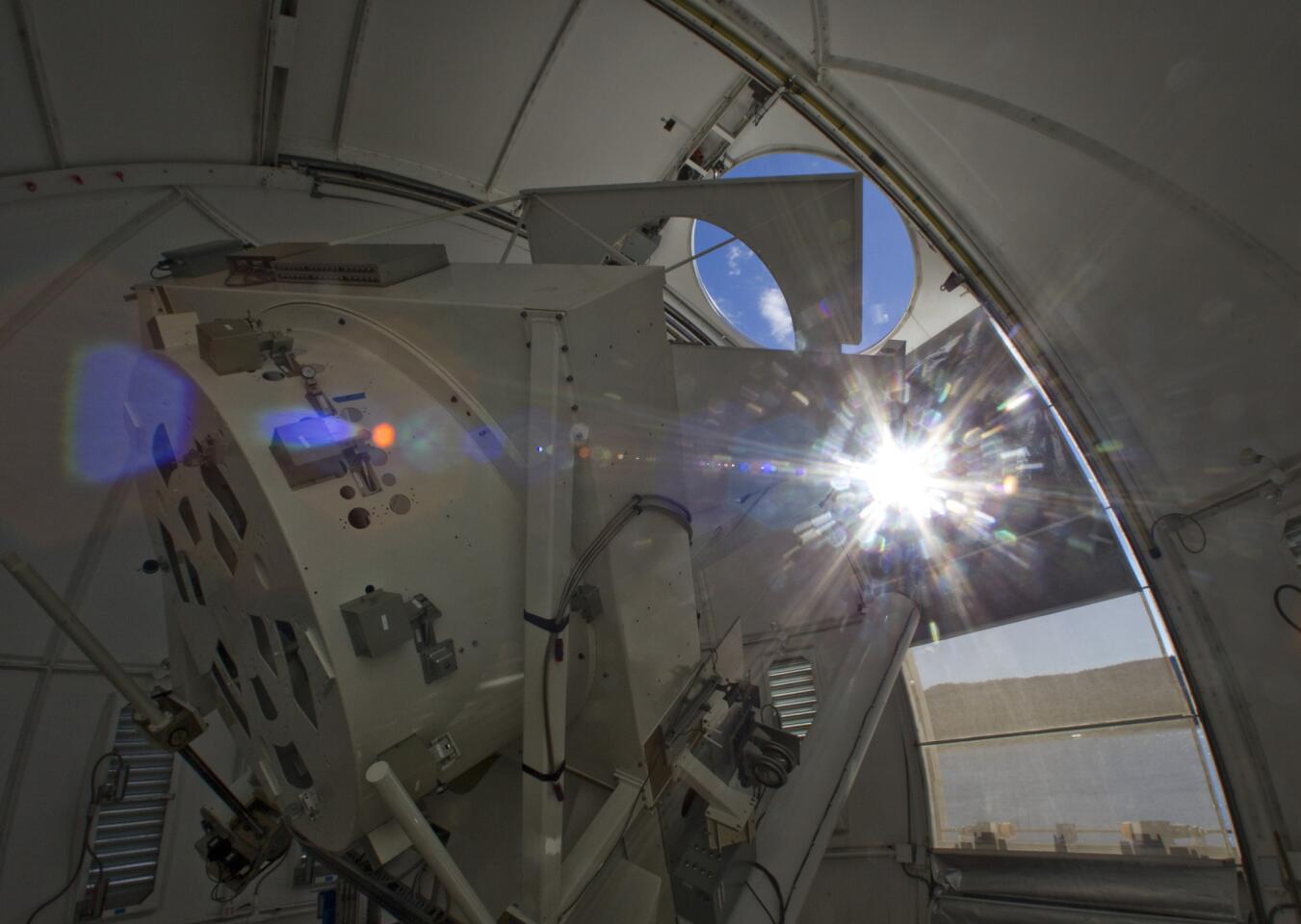
The sun shines through part of the 1.6-meter telescope at the Big Bear Observatory on Oct. 8. (Allen J. Schaben / Los Angeles Times)
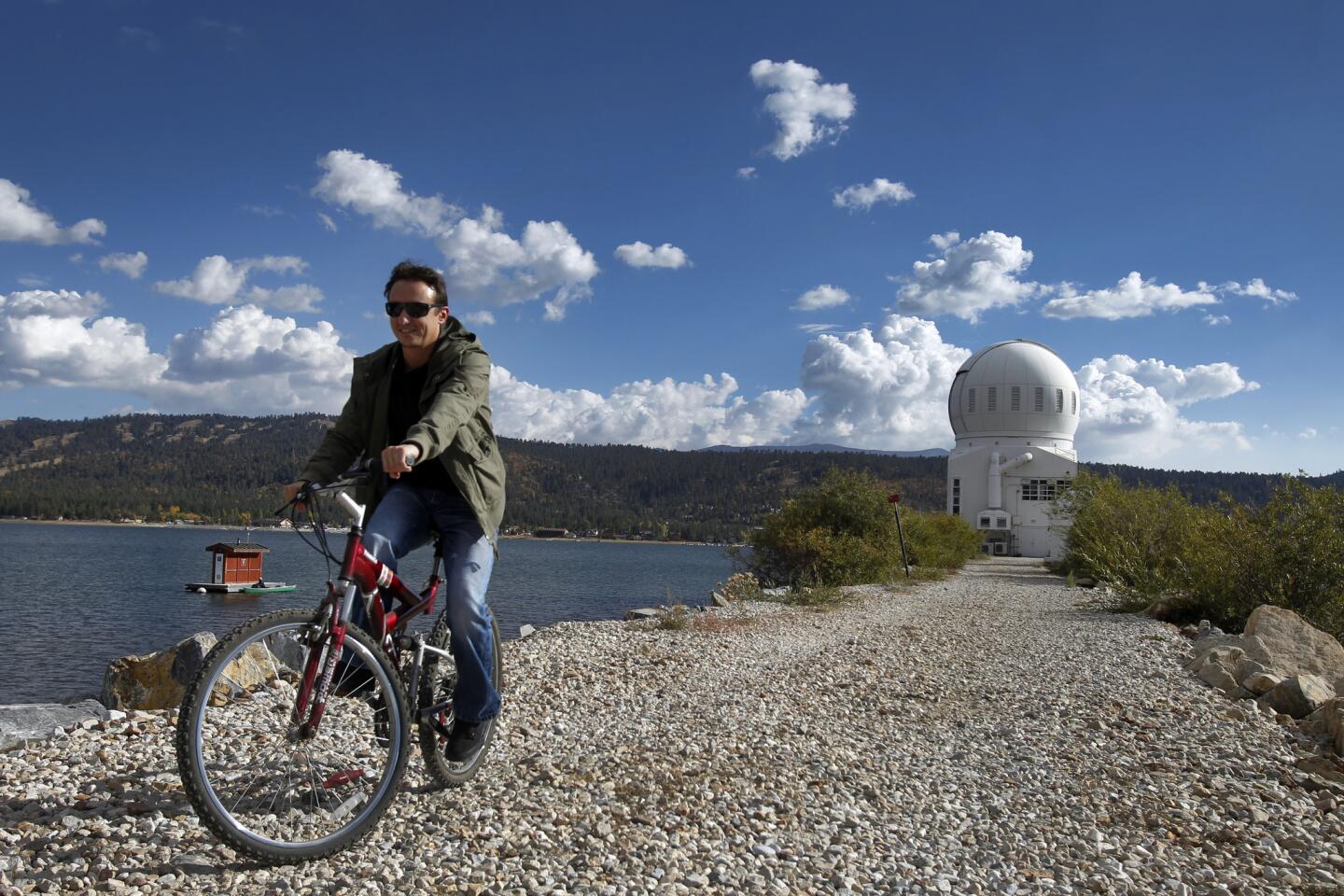
After a day of work, Nicolas Gorceix, optical engineer at the Big Bear Solar Observatory, rides his bike home on Oct. 8. (Allen J. Schaben / Los Angeles Times)
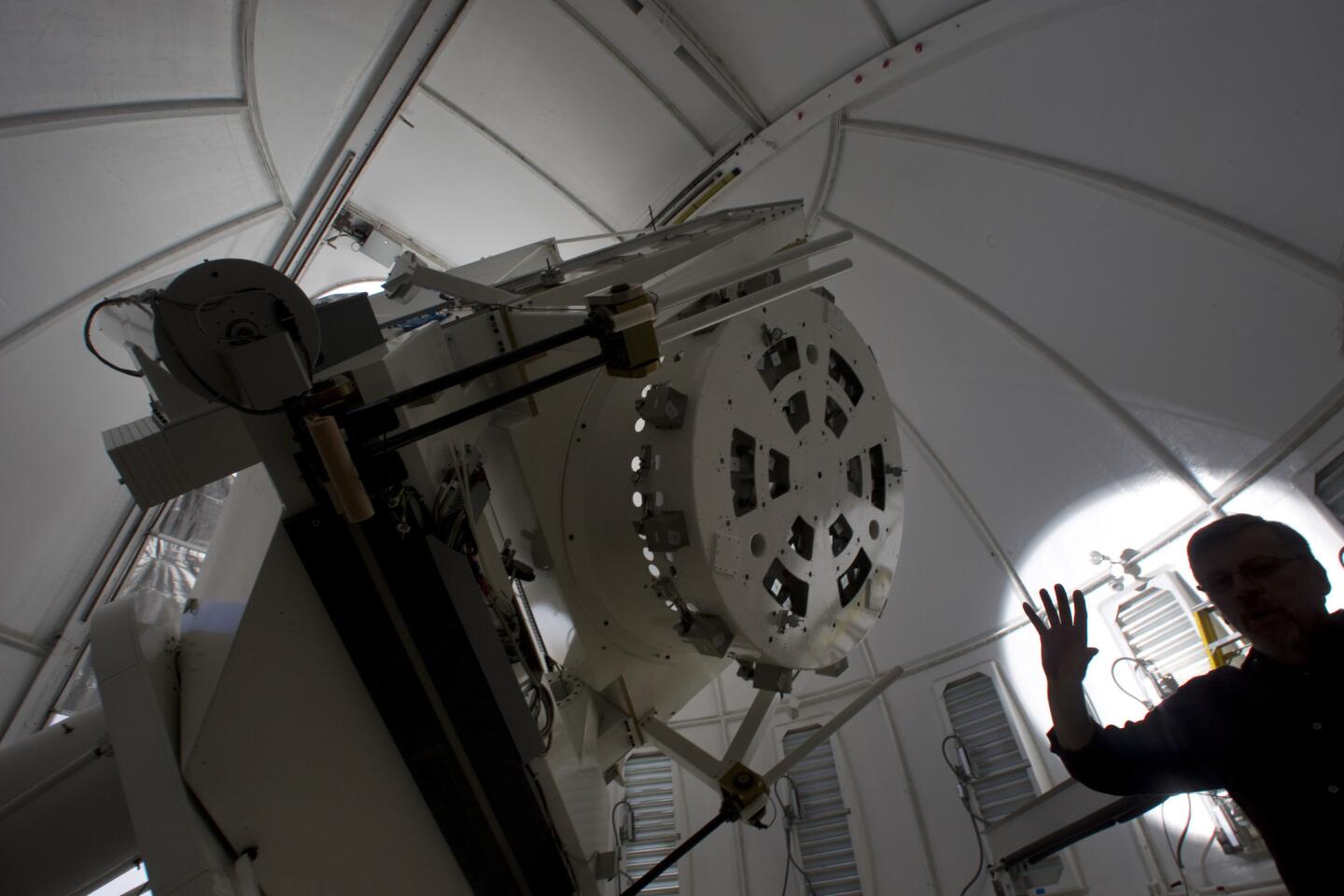
Vasyl Yurchyshyn, a research professor at the Big Bear Solar Observatory, is silhouetted by the sun as he stands next to the facility’s telescope on Oct. 8. (Allen J. Schaben / Los Angeles Times)
